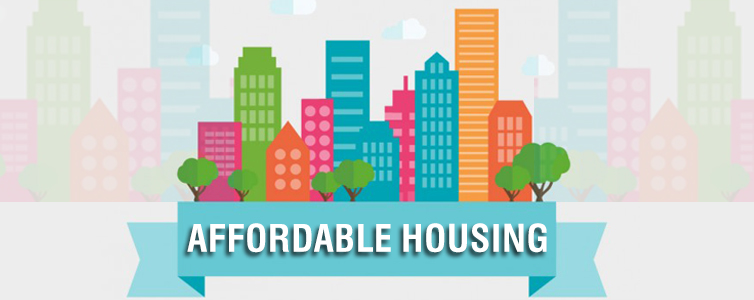The Case for Sustainability in Affordable Housing
There has been a continued need for affordable housing and with the advances in sustainable practices and products, it may be possible to do more for residents and the environment at a lower cost. Agents have noted an increased desire for green homes or more energy-efficient homes from buyers and this interest will be likely to continue as energy costs soar and many become aware of how construction and transportation related to housing can add to greenhouse gas emissions. Sustainable design practices and energy-efficient materials and products make green and affordable housing a real possibility.
More Interest in Affordable Sustainable Homes
More affordable neighborhoods can be one of the boons of continuous efforts toward sustainable housing. The use of green design and construction, improved transportation options and compact development can do much to keep construction costs down while protecting the environment, according to the United States Environmental Protection Agency. It has been found that through the use of green building materials, appliances and techniques, homeowners can expect an average reduction of energy consumption of 33 percent.
A decrease in water use follows closely behind with an estimated 30 percent. This can help potential homeowners reduce much of their energy costs and keep more of their after tax income. An aim to reduce water consumption will be particularly helpful in drought-prone areas. Water-efficiency becomes more important as communities across the nation head into the future. Homeowners benefit from lower energy costs with sustainable homes, while fewer resources are consumed in the environment to satisfy energy demands.
How to Build Sustainably
There have been mistakes on the road to sustainable housing that failed to account for the need for homeowners to live connected to a grid that included transportation and commerce options. Affordable housing design values have changed much since their inception and designers now consider energy-efficiency, context-responsiveness, and healthy environments in the construction of an affordable structure. How can sustainability in design and construction help drive down costs while keeping the practical needs of owners or tenants in mind? Sustainable development can be achieved through:
- Choosing sites in proximity to schools, public transportation and other needs for more walkable communities.
- Building structures within town centers or cities with existing infrastructures.
- Designing units and outdoors spaces with passive design strategies in mind to reduce energy needs naturally.
- Utilizing LEED and Energy Star checklists to decrease energy consumption.
- Selecting durable fixtures, equipment, hardware and finishes that are easy to repair.
The choice of incorporating environmentally responsible materials with clean manufacturing process that demonstrate low embodied energy, as well as picking materials and finishes that are not known for creating an unhealthy interior environment, will be useful in meeting environmental needs and those of residents in sustainable communities. Individuals will be able to easily maintain such residences and have many of their needs met within walking distance or through public transportation options when sustainable design techniques and products, and affordable housing needs, are brought together.
Why Think Sustainable?
“Green” affordable housing is becoming a national movement. There are sustainable affordable housing developments in different areas of the country, such as Pittsburgh, PA and Washington, DC. Many states press forward to reduce energy demand as outlined in the EPA’s Clean Power Plan. It is possible to retrofit existing housing as well as construct new sustainable affordable housing to meet growing housing demands.
Affordable housing and green housing is not only a trend that will benefit low-income residents. Sustainable housing, passive design and green products and systems are attractive to millenials looking to cut energy costs and are willing to pay a bit more to purchase a home when a home is built sustainably or has green upgrades to reduce their long-term energy costs. Different demographic groups can benefit from the trend to make housing greener and more affordable.
Guest post by realtor Gary Ashton with The Ashton Real Estate Group. You can find Gary on Twitter and LinkedIn. Contact our team at development@schabitat.org for guest post inquiries.




